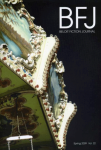Poet Lore – Spring/Summer 2009
“[T]he way you can feel his intelligence moving on the page in the choices and turns he makes.” This is Cornelius Eady describing the work of Gregory Pardlo, the poet whose work he has chosen for “Poets Introducing Poets,” always one of this magazine’s finest features. I’m not sure I’ve ever read a better description of that elusive and spectacular quality that makes great poetry so hard to define and so easy to love. And Eady – who praises Pardlo’s line and his ear, as well as his poetic intelligence – couldn’t be more right about Pardlo. His work is “dense, but it’s never a burden to navigate” (“Kite / strings tensing the load of a saddle- / backed wind”). Continue reading “Poet Lore – Spring/Summer 2009”

